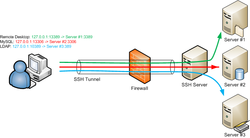 Apple FileVaultSomething everyone would do I guess (the favoring part at least :) ). But Apple is doing this in a very peculiar way. When you run OSX with a ton of third-party applications you won't notice things, since everything runs as it should. But when you're going to use FileVault, things change. A lot....
Apple FileVaultSomething everyone would do I guess (the favoring part at least :) ). But Apple is doing this in a very peculiar way. When you run OSX with a ton of third-party applications you won't notice things, since everything runs as it should. But when you're going to use FileVault, things change. A lot....
FileVault is the way Apple secures your data. When turned on the OS creates a sparse iage of your userdata. So everything stored within your user directory is encrypted using AES-128.
The use of FileVault screws up certain system files. One of those is (or several for that matter) is used to store the default applications. Like FireFox for Internet instead of Safari. Every time you reboot your system the default application settings are read.
This weekend I also found out that at least one handy program also disagrees with FileVault. Little Snitch won't properly save it's registration info when you're using FileVault.
You know what the worst thing is? This BUG is present since Panther (OSX 10.3). I wonder if this is going to be fixed in Snow Leopard. To be honest, I doubt it. If they can't figure it out in 4 years, they probably never will.
As a security savvy nerd I want to use FileVault on my MacBook, but the problems with FileVault made me decide to uninstall this feature. Too bad that there are no other real alternatives. Truecrypt (or PGP) is nice, but it can't encrypt your hard disk (from which you boot) or even your user directory. Check Point seems to have software, but there's no way of buying it easily. So it seems that's it's mainly reserved for corporate environments.
UPDATE: w00t... They solved this annoying 'feature' Apple OS X 10.6 a.k.a. Snow Leopard. Way to go Apple. Although it being several OS releases/years too late!!!!
 Friday, January 22, 2010 at 17:17
Friday, January 22, 2010 at 17:17  Willem |
Willem |  Post a Comment |
Post a Comment |  17 years,
17 years,  Escalation,
Escalation,  Windows,
Windows,  bug,
bug,  fail in
fail in  Microsoft,
Microsoft,  Operating Systems,
Operating Systems,  Security
Security 






